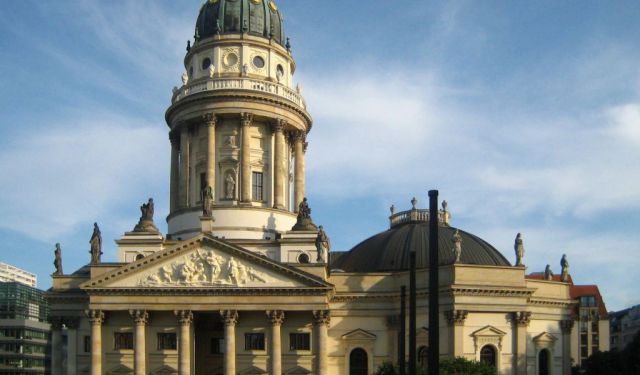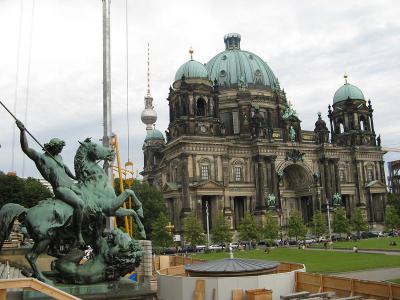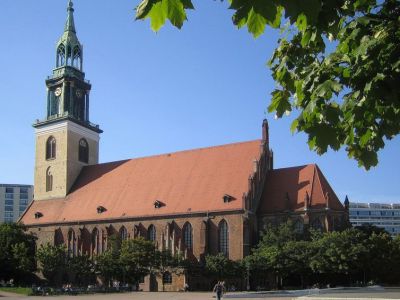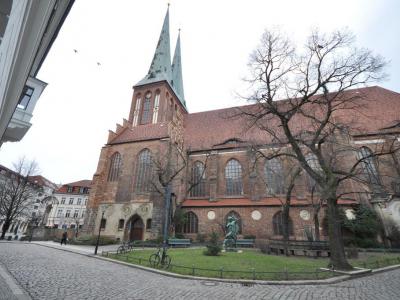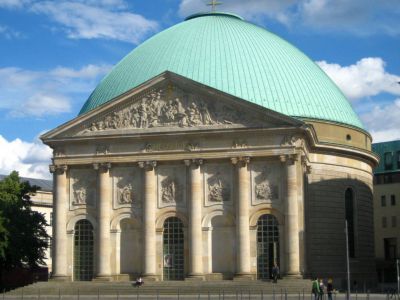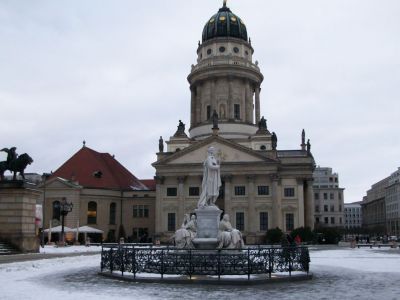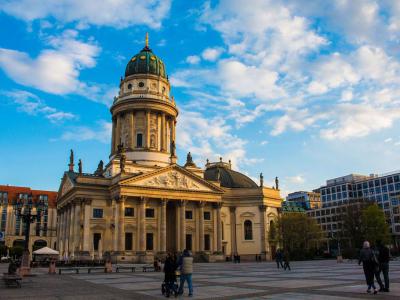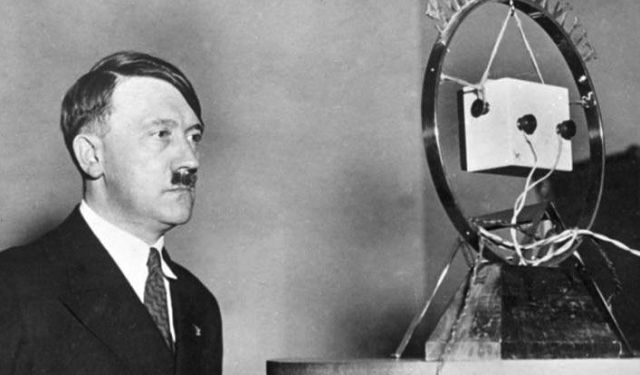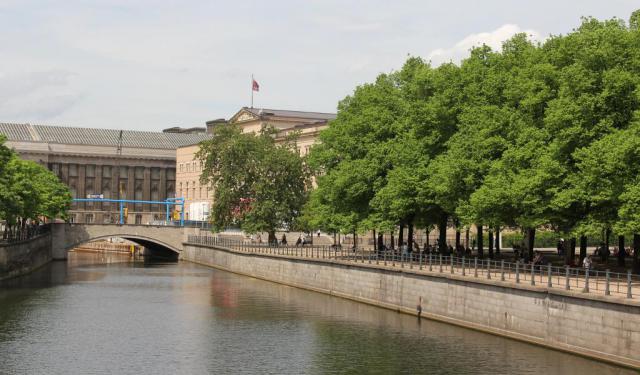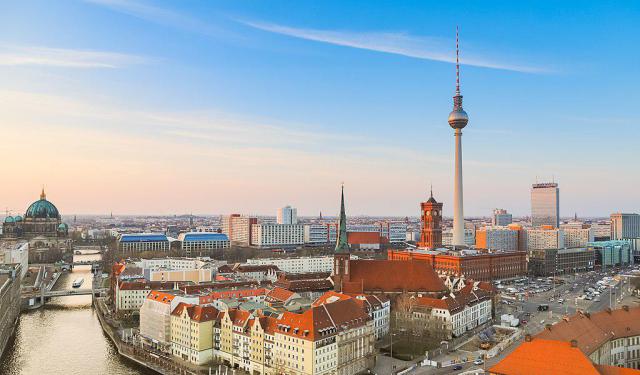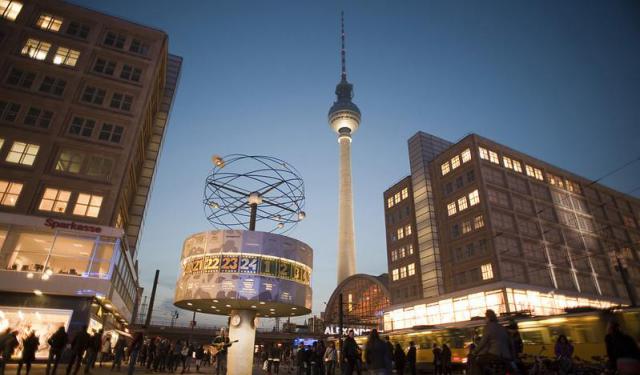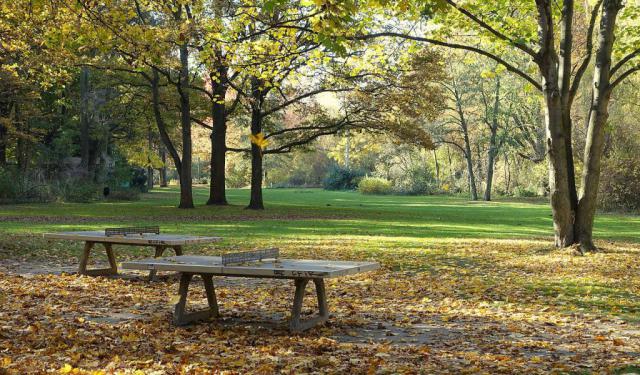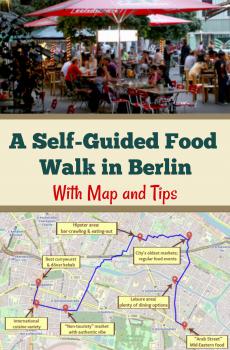Berlin's Historical Churches Walking Tour (Self Guided), Berlin
Berlin boasts a diversity of important religious sights. Among the most acclaimed are the places of worship centuries old, such as the beautiful Neo-Classical style Nikolaikirche or the red-brick Gothic style Marienkirche (St. Mary’s Church), both dating back to the 1200s. Aside from being home to the best organ music in town, Marienkirche’s hall still contains numerous beautiful features and decorations such as the bronze baptismal font (1437) and the alabaster pulpit (1703). Nikolaikirche, in turn, holds a permanent exhibition, called “From the Base of the City to the Double Spire”, offering visitors insights into the history of the building and surrounding area.
While the Berliner Dom is small by the standards of cathedrals in other cities, it’s quite a delightful creation. The stonework and windows are wonderful, and the restored interior is worth spending some time taking in. One is able to descend in the crypt and see the monumental sarcophagi of the Hohenzollerns (most important ruling dynasty of Berlin and Prussia), or climb the stairs to nearly the top of the dome and enjoy terrific, unsurpassed panoramic views from the outside balcony.
Further along the way, Berlin’s largest protestant church, the Deutscher Dom has originally been erected in 1708 under King Friedrich I, who was intent in turning the city into a royal residence to rival Versailles. Not coincidentally, the building is best known as one of the three that make up Gendarmenmarkt square’s spectacular ensemble, including the Französischer Dom (French Cathedral) and the Konzerthaus. When visiting the square, one can’t help but notice the general symmetry between the Französischer and Deutscher cathedrals; however, they are not twin churches and have noticeable differences in the facade and portico areas if you take a closer look.
Take this self-guided walking tour to discover Berlin’s magnificent religious heritage and landmark temples at your own pace.
While the Berliner Dom is small by the standards of cathedrals in other cities, it’s quite a delightful creation. The stonework and windows are wonderful, and the restored interior is worth spending some time taking in. One is able to descend in the crypt and see the monumental sarcophagi of the Hohenzollerns (most important ruling dynasty of Berlin and Prussia), or climb the stairs to nearly the top of the dome and enjoy terrific, unsurpassed panoramic views from the outside balcony.
Further along the way, Berlin’s largest protestant church, the Deutscher Dom has originally been erected in 1708 under King Friedrich I, who was intent in turning the city into a royal residence to rival Versailles. Not coincidentally, the building is best known as one of the three that make up Gendarmenmarkt square’s spectacular ensemble, including the Französischer Dom (French Cathedral) and the Konzerthaus. When visiting the square, one can’t help but notice the general symmetry between the Französischer and Deutscher cathedrals; however, they are not twin churches and have noticeable differences in the facade and portico areas if you take a closer look.
Take this self-guided walking tour to discover Berlin’s magnificent religious heritage and landmark temples at your own pace.
How it works: Download the app "GPSmyCity: Walks in 1K+ Cities" from Apple App Store or Google Play Store to your mobile phone or tablet. The app turns your mobile device into a personal tour guide and its built-in GPS navigation functions guide you from one tour stop to next. The app works offline, so no data plan is needed when traveling abroad.
Berlin's Historical Churches Walking Tour Map
Guide Name: Berlin's Historical Churches Walking Tour
Guide Location: Germany » Berlin (See other walking tours in Berlin)
Guide Type: Self-guided Walking Tour (Sightseeing)
# of Attractions: 6
Tour Duration: 1 Hour(s)
Travel Distance: 2.7 Km or 1.7 Miles
Author: DanaOffice
Sight(s) Featured in This Guide:
Guide Location: Germany » Berlin (See other walking tours in Berlin)
Guide Type: Self-guided Walking Tour (Sightseeing)
# of Attractions: 6
Tour Duration: 1 Hour(s)
Travel Distance: 2.7 Km or 1.7 Miles
Author: DanaOffice
Sight(s) Featured in This Guide:
- Berliner Dom (Berlin Cathedral)
- Marienkirche (Saint Mary's Church)
- Museum Nikolaikirche (St. Nicholas' Church Museum)
- Saint Hedwigs Kathedrale (Saint Hedwig's Cathedral)
- Franzosischer Dom (French Cathedral)
- Deutscher Dom (German Cathedral)
1) Berliner Dom (Berlin Cathedral) (must see)
Despite what its lofty name suggests, the Berlin Cathedral is... not a cathedral. Yep, never was. Because Berlin never had a Catholic bishop in the house.
Now, rewind to 1451, when Prince-Elector Frederick II-nicknamed "Iron-tooth" because, well, medieval PR was wild-built a castle chapel right here. It started out Catholic, then switched to Lutheran in 1539, and just to keep things spicy, went Calvinist by 1608.
The version we see today is a Neo-Renaissance stunner, built between 1894 and 1905 by order of Emperor Wilhelm II, who basically wanted his very own Protestant answer to the Vatican’s Saint Peter’s Basilica. And what a power move it was: 114 meters long, 73 wide, and 116 tall-this place made everything else in Berlin look like dollhouse furniture.
And it wasn’t just for show, either. The Hohenzollerns-Germany’s royal family-worshipped here and even used the crypt as their final resting place. That lasted until 1918, when Wilhelm II peaced out to the Netherlands after abdicating the throne.
Then came World War II, and let’s just say the cathedral did not come out looking its best. East Germany did some repairs-thanks, GDR-but also tore down the Memorial Church in 1975, which wasn’t their finest hour.
Fast forward to 1993, and voilà: the place got a full glow-up. It now has the majestic pipe organ, pristine acoustics, priceless art, and vibes so divine they practically echo. Today, it’s home to choirs galore, including the English Choir Berlin, which hosts monthly Choral Evensong in true Anglican style.
If you're feeling brave, you can climb the dome! There’s a roomy stairwell, plenty of landings to catch your breath-and yes, actual chairs if you need a moment. At the bottom, history buffs rejoice: the crypt holds 94 royal sarcophagi. It's like Prussian Netflix, but... quieter.
Tip:
Snag the audio guide-it’s a small fee for a big info boost. Or grab a printed guide if you're old school. And in the summer, feel free to stretch out on the lawn across the street, near the fountain. It's the perfect picnic spot, and the cathedral makes a dramatic lunch backdrop.
Now, rewind to 1451, when Prince-Elector Frederick II-nicknamed "Iron-tooth" because, well, medieval PR was wild-built a castle chapel right here. It started out Catholic, then switched to Lutheran in 1539, and just to keep things spicy, went Calvinist by 1608.
The version we see today is a Neo-Renaissance stunner, built between 1894 and 1905 by order of Emperor Wilhelm II, who basically wanted his very own Protestant answer to the Vatican’s Saint Peter’s Basilica. And what a power move it was: 114 meters long, 73 wide, and 116 tall-this place made everything else in Berlin look like dollhouse furniture.
And it wasn’t just for show, either. The Hohenzollerns-Germany’s royal family-worshipped here and even used the crypt as their final resting place. That lasted until 1918, when Wilhelm II peaced out to the Netherlands after abdicating the throne.
Then came World War II, and let’s just say the cathedral did not come out looking its best. East Germany did some repairs-thanks, GDR-but also tore down the Memorial Church in 1975, which wasn’t their finest hour.
Fast forward to 1993, and voilà: the place got a full glow-up. It now has the majestic pipe organ, pristine acoustics, priceless art, and vibes so divine they practically echo. Today, it’s home to choirs galore, including the English Choir Berlin, which hosts monthly Choral Evensong in true Anglican style.
If you're feeling brave, you can climb the dome! There’s a roomy stairwell, plenty of landings to catch your breath-and yes, actual chairs if you need a moment. At the bottom, history buffs rejoice: the crypt holds 94 royal sarcophagi. It's like Prussian Netflix, but... quieter.
Tip:
Snag the audio guide-it’s a small fee for a big info boost. Or grab a printed guide if you're old school. And in the summer, feel free to stretch out on the lawn across the street, near the fountain. It's the perfect picnic spot, and the cathedral makes a dramatic lunch backdrop.
2) Marienkirche (Saint Mary's Church)
Berlin's Saint Mary's Church is one of the oldest in town. Its exact age is uncertain, but it was first mentioned in chronicles in 1292. Originally a Roman Catholic church, it became Lutheran after the Reformation in 1539 and later joined the Prussian Union of Churches.
The unassuming fusion of architectural styles somehow renders it one of Berlin's most appealing churches; its simplicity is a reminder of the city's humble beginnings. The oldest parts of the church are made of granite, while the majority of it is built of red brick, mirroring the design of the nearby Berlin City Hall. Severely damaged during World War II, Saint Mary’s was located in East Berlin after the war and was restored by East German authorities in the 1950s.
Once hemmed in by neighboring buildings, Saint Mary's now stands in solitude, casting its shadow beneath the imposing TV Tower. Outside the building is a statue of Martin Luther, with his right hand touching one of the Bible's pages as if uttering his renowned phrase, "by faith alone." Meanwhile, the church's interior – an excellent place to escape the buzz – reveals a rather austere Gothic design punctuated by notable Baroque embellishments.
Of particular note is the pulpit adorned with elaborately carved cherubs wielding trumpets and the baptismal font supported by three black dragon-shaped legs. In terms of carving and gilding, the restored organ tops it all off, and visitors can enjoy rousing recitals on Thursdays and Fridays, typically accompanied by an invitation to closely examine the 18th-century instrument.
Upon entering, brace yourself for a surprise: a 22-meter-tall frieze titled "The Dance of Death", commemorating the plague epidemics that wreaked havoc during the Dark Ages. Also inside, visitors can view the monumental tombs of a Prussian general field marshal and the founder of the world’s oldest Biblical society.
Tips:
Photography enthusiasts can find an ideal vantage point with a reflective fountain layout in the square, just behind the TV Tower, offering a perfect reflection of the church on the water's surface.
The unassuming fusion of architectural styles somehow renders it one of Berlin's most appealing churches; its simplicity is a reminder of the city's humble beginnings. The oldest parts of the church are made of granite, while the majority of it is built of red brick, mirroring the design of the nearby Berlin City Hall. Severely damaged during World War II, Saint Mary’s was located in East Berlin after the war and was restored by East German authorities in the 1950s.
Once hemmed in by neighboring buildings, Saint Mary's now stands in solitude, casting its shadow beneath the imposing TV Tower. Outside the building is a statue of Martin Luther, with his right hand touching one of the Bible's pages as if uttering his renowned phrase, "by faith alone." Meanwhile, the church's interior – an excellent place to escape the buzz – reveals a rather austere Gothic design punctuated by notable Baroque embellishments.
Of particular note is the pulpit adorned with elaborately carved cherubs wielding trumpets and the baptismal font supported by three black dragon-shaped legs. In terms of carving and gilding, the restored organ tops it all off, and visitors can enjoy rousing recitals on Thursdays and Fridays, typically accompanied by an invitation to closely examine the 18th-century instrument.
Upon entering, brace yourself for a surprise: a 22-meter-tall frieze titled "The Dance of Death", commemorating the plague epidemics that wreaked havoc during the Dark Ages. Also inside, visitors can view the monumental tombs of a Prussian general field marshal and the founder of the world’s oldest Biblical society.
Tips:
Photography enthusiasts can find an ideal vantage point with a reflective fountain layout in the square, just behind the TV Tower, offering a perfect reflection of the church on the water's surface.
3) Museum Nikolaikirche (St. Nicholas' Church Museum)
Berlin's oldest church turned museum, Saint Nicholas' Church has stood as a downtown landmark for over 800 years. Completed in 1230, this imposing late-Gothic structure is found in the city's oldest district, Nikolaiviertel (Nicholas Quarter), just south of the Red Town Hall, and is easily recognizable by its two impressive spires and stonework revealing a distinctive medieval past.
While it's now officially known as a museum, historically this place wasn't just a place of worship and a resting place for notable Berlin families; it also served as the seat of the city council and held deep cultural significance. In fact, the first city council assembly was sworn in here in 1809. It stopped being used as a church in 1939 and was converted into a museum in 1987. After German reunification, in 1991, the first freely-elected Berlin-wide city parliament met here. Following extensive renovation, the building reopened to the public in 2010.
Today, it houses a permanent exhibition titled "From the Base of the City to the Double Spire", which provides visitors with insights into the building's history and the surrounding area. The museum also hosts various events, including organ music concerts that are sure to entice you to return for more. There's even a special program tailored for children and youth.
The Nicholas Quarter surrounding the church is filled with narrow alleys teeming with popular restaurants, quaint souvenir shops, and small museums. This district still retains the character of the long-lost Alt-Berlin (Old Berlin) and is often bustling with tourists seeking a place to relax after a day of sightseeing, especially during the summer. Nearly every other building in this area houses a restaurant, inn, pub, or café, making it a lively spot that stays active until late at night.
While it's now officially known as a museum, historically this place wasn't just a place of worship and a resting place for notable Berlin families; it also served as the seat of the city council and held deep cultural significance. In fact, the first city council assembly was sworn in here in 1809. It stopped being used as a church in 1939 and was converted into a museum in 1987. After German reunification, in 1991, the first freely-elected Berlin-wide city parliament met here. Following extensive renovation, the building reopened to the public in 2010.
Today, it houses a permanent exhibition titled "From the Base of the City to the Double Spire", which provides visitors with insights into the building's history and the surrounding area. The museum also hosts various events, including organ music concerts that are sure to entice you to return for more. There's even a special program tailored for children and youth.
The Nicholas Quarter surrounding the church is filled with narrow alleys teeming with popular restaurants, quaint souvenir shops, and small museums. This district still retains the character of the long-lost Alt-Berlin (Old Berlin) and is often bustling with tourists seeking a place to relax after a day of sightseeing, especially during the summer. Nearly every other building in this area houses a restaurant, inn, pub, or café, making it a lively spot that stays active until late at night.
4) Saint Hedwigs Kathedrale (Saint Hedwig's Cathedral)
The first Roman Catholic temple in Prussia constructed following the Protestant Reformation, this grand and imposing circular cathedral was designed after Rome's Pantheon and opened its doors in 1773. With the approval of King Frederick II, it provided a place of worship for the numerous Catholic migrants to Berlin, particularly those from Upper Silesia, which is why it is dedicated to Saint Hedwig of Andechs, the patron of Silesia and Brandenburg. The structure suffered significant damage during World War II, particularly to its copper dome, but underwent meticulous restoration and was re-inaugurated in 1963.
While the exterior showcases a traditional neoclassical design, the inner space is all peacefulness and minimalism. It offers ample seating with hard wooden pews and features a beautiful oculus, a commanding pipe organ, and a centrally positioned altar. The stained glass windows display geometric patterns with restrained decoration.
The combination of soothing organ music and the welcoming attitude of local parishioners toward foreign visitors creates a pleasant and refreshing atmosphere for a break during a day of sightseeing. As an extra, climbing the 270+ steps to the dome is a rewarding experience, as it offers panoramic views of the surroundings.
Tip:
If you visit at 3 pm on a Wednesday, you can enjoy a 30-minute organ concert. The majestic and rich sound fills the space with surprisingly little echo.
While the exterior showcases a traditional neoclassical design, the inner space is all peacefulness and minimalism. It offers ample seating with hard wooden pews and features a beautiful oculus, a commanding pipe organ, and a centrally positioned altar. The stained glass windows display geometric patterns with restrained decoration.
The combination of soothing organ music and the welcoming attitude of local parishioners toward foreign visitors creates a pleasant and refreshing atmosphere for a break during a day of sightseeing. As an extra, climbing the 270+ steps to the dome is a rewarding experience, as it offers panoramic views of the surroundings.
Tip:
If you visit at 3 pm on a Wednesday, you can enjoy a 30-minute organ concert. The majestic and rich sound fills the space with surprisingly little echo.
5) Franzosischer Dom (French Cathedral)
Facing its German counterpart, the Deutscher Dom, across the Gendarmes' Market square, the French Cathedral has a historical significance tied to the French Huguenot community. After being expelled from France following the revocation of the Edict of Nantes, these Huguenots sought refuge in Protestant Berlin. In fact, the primary structure of the church, completed in 1705, was designed based on the Huguenot church in Charenton, France, which had been destroyed in 1688.
The entrance, facing Charlottenstrasse, leads to a straightforward interior characterized by a rectangular nave with semicircular sections on both sides. An important feature is the late Baroque organ dating back to 1754. The church's most prominent architectural element is a massive cylindrical tower encircled by Corinthian porticoes at its base. This tower was added approximately 80 years after the church's initial construction and now houses the Huguenot Museum, which provides insight into the history of the Huguenots in France and Brandenburg.
Huguenots were well-educated and highly skilled individuals who played a vital role in Berlin's development as a hub of science, craftsmanship, and commerce. Their legacy can still be seen today in many words incorporated into the Berlin dialect, stemming from the French language they brought with them.
The entrance, facing Charlottenstrasse, leads to a straightforward interior characterized by a rectangular nave with semicircular sections on both sides. An important feature is the late Baroque organ dating back to 1754. The church's most prominent architectural element is a massive cylindrical tower encircled by Corinthian porticoes at its base. This tower was added approximately 80 years after the church's initial construction and now houses the Huguenot Museum, which provides insight into the history of the Huguenots in France and Brandenburg.
Huguenots were well-educated and highly skilled individuals who played a vital role in Berlin's development as a hub of science, craftsmanship, and commerce. Their legacy can still be seen today in many words incorporated into the Berlin dialect, stemming from the French language they brought with them.
6) Deutscher Dom (German Cathedral)
The German Cathedral at the southern end of Gendarmes' Market square is a historic German Protestant-Reformed church constructed in 1708 by Giovanni Simonetti. The design was based on a distinctive five-petal shape, and in 1785, it gained a dome-covered tower, mirroring that of the French Cathedral across the square, and complete with statues representing figures from the Old and New Covenant.
Unfortunately, the church suffered fire damage in 1945, but it was painstakingly reconstructed in 1993. While the exterior, including its sculpted embellishments, was faithfully restored, the interior was modernized to host an exhibition called "Paths, Confusions, Detours" about Germany's parliamentary democracy. Also known as the Bundestag's Exhibition, it is well-organized and comprehensive, covering various historical periods, including the 1800s, World War I, the Weimar Republic, the Nazi era, the Cold War era, and the present day. Visitors can also explore a replica of the Bundestag on one of the floors.
Another noteworthy feature is the opportunity to ascend the Cathedral's tower. While access to the very top is restricted, the staircase leads to landings from which visitors can capture great views of the cylindrical red brick tower crowned by the dome. The stairwell is located to the right of the gift shop's cash register, with the stairs winding around the tower's exterior, leaving the center open. Best of all, this attraction is free of charge.
Why You Should Visit:
Fantastic place to embark on a comprehensive journey through Germany's history, providing valuable insights into both its achievements and setbacks. While the descriptions are primarily in German, an informative audio guide is available for free in English, French, and German. If needed, tour guides are also on hand to assist visitors.
Unfortunately, the church suffered fire damage in 1945, but it was painstakingly reconstructed in 1993. While the exterior, including its sculpted embellishments, was faithfully restored, the interior was modernized to host an exhibition called "Paths, Confusions, Detours" about Germany's parliamentary democracy. Also known as the Bundestag's Exhibition, it is well-organized and comprehensive, covering various historical periods, including the 1800s, World War I, the Weimar Republic, the Nazi era, the Cold War era, and the present day. Visitors can also explore a replica of the Bundestag on one of the floors.
Another noteworthy feature is the opportunity to ascend the Cathedral's tower. While access to the very top is restricted, the staircase leads to landings from which visitors can capture great views of the cylindrical red brick tower crowned by the dome. The stairwell is located to the right of the gift shop's cash register, with the stairs winding around the tower's exterior, leaving the center open. Best of all, this attraction is free of charge.
Why You Should Visit:
Fantastic place to embark on a comprehensive journey through Germany's history, providing valuable insights into both its achievements and setbacks. While the descriptions are primarily in German, an informative audio guide is available for free in English, French, and German. If needed, tour guides are also on hand to assist visitors.
Walking Tours in Berlin, Germany
Create Your Own Walk in Berlin
Creating your own self-guided walk in Berlin is easy and fun. Choose the city attractions that you want to see and a walk route map will be created just for you. You can even set your hotel as the start point of the walk.
Third Reich Walking Tour
Between the years 1933 and 1945, Germany was governed as a totalitarian state under the rule of Adolf Hitler and the National Socialist German Workers’ Party-more widely known as the Nazi Party. This era is commonly referred to as the "Third Reich" or "Nazi Germany."
For those visiting Berlin today, the events surrounding the Nazi regime and its surrender that brought... view more
Tour Duration: 2 Hour(s)
Travel Distance: 4.0 Km or 2.5 Miles
For those visiting Berlin today, the events surrounding the Nazi regime and its surrender that brought... view more
Tour Duration: 2 Hour(s)
Travel Distance: 4.0 Km or 2.5 Miles
Museum Island Walking Tour
Welcome to Museum Island-the grand project of King Frederick William IV of Prussia, implemented in the mid-19th century (probably “to impress future tourists”). The whole concept kicked off with the Old Museum-a true gem for the Greco-Roman classics fans, designed by the superstar architect Karl Friedrich Schinkel in 1830. The idea was to make art and knowledge accessible to the public. The... view more
Tour Duration: 1 Hour(s)
Travel Distance: 1.2 Km or 0.7 Miles
Tour Duration: 1 Hour(s)
Travel Distance: 1.2 Km or 0.7 Miles
Berlin Introduction Walking Tour
The German capital, Berlin, is known for its turbulent past. Today, this sprawling metropolis is filled with a mix of historical resonance and modernity manifested in creative industries, popular media, and diverse cultural tourism.
The first written records of settlements in the present-day Berlin area date back to the late 12th century. In 1157, the region came under German rule as part of... view more
Tour Duration: 2 Hour(s)
Travel Distance: 4.0 Km or 2.5 Miles
The first written records of settlements in the present-day Berlin area date back to the late 12th century. In 1157, the region came under German rule as part of... view more
Tour Duration: 2 Hour(s)
Travel Distance: 4.0 Km or 2.5 Miles
Alexanderplatz Walking Tour
One of Berlin’s cosmopolitan hearts, Alexanderplatz (or Alexander Square) is a true hive of activity. There is always something going on here: Christmas markets, Easter fairs, buskers, performances, Oktoberfest, and the list is countless. Easily accessible, with lots of transport connections and all manner of drink and food outlets, it’s a great place to hang around, take photos, and enjoy... view more
Tour Duration: 1 Hour(s)
Travel Distance: 1.6 Km or 1 Miles
Tour Duration: 1 Hour(s)
Travel Distance: 1.6 Km or 1 Miles
Berlin Food Walking Tour
While Berlin may not be considered a typical foodie destination yet, recent years saw a growing number of decent places to eat, serving both German and international cuisine. At some point, the city has even earned itself the title of a vegetarian capital of the world, contrary to what one may have expected. Amid all this renaissance in creativity and culture, coupled with the influx of the... view more
Tour Duration: 1 Hour(s)
Travel Distance: 1.4 Km or 0.9 Miles
Tour Duration: 1 Hour(s)
Travel Distance: 1.4 Km or 0.9 Miles
Tiergarten Walking Tour
Known for the huge park of the same name, which once was a royal hunting ground, the central district of Tiergarten (German for “Animal Garden”) is home to the Berlin Zoo, the Victory Column with its winged statue and the lively, lakeside Café am Neuen See.
Begin your exploration at Postdamer Platz, the historic central square of Berlin, once regarded in the same way as Piccadilly Circus... view more
Tour Duration: 2 Hour(s)
Travel Distance: 3.4 Km or 2.1 Miles
Begin your exploration at Postdamer Platz, the historic central square of Berlin, once regarded in the same way as Piccadilly Circus... view more
Tour Duration: 2 Hour(s)
Travel Distance: 3.4 Km or 2.1 Miles
Useful Travel Guides for Planning Your Trip
Best Cafés and Coffee Houses of Berlin
Cafes have a certain refinery and elegance that pubs lack; there is a mellowness that is rarely found in bars and clubs, and an ease and tranquillity that is not to be found in restaurants with their steaming kitchens, heavy plates, clattering cutlery, constant complaints and corrections and,...
Best Bars in Kreuzberg, Berlin
Kreuzberg and "Kreuzkölln" - the area where Kreuzberg and Neukölln meet, mostly along the canal in east Kreuzberg and north of Sonnenallée in Neukölln - has a constantly and rapidly evolving bar culture that makes it one of the trendiest alternative evening and nightlife spots in...
Best Food in Kreuzberg, Berlin
Kreuzberg is known for having great cheap, street food, particularly of the Middle Eastern variety. On almost every corner you can find a kebab or falafel shop, although the trick is knowing which to choose! While you can typically get a good, tasty wrap for €2.50-4, the quality, quantity and...
A Self-Guided Food Walk in Berlin
Repeatedly scarred throughout its long and often depressing past, today's Berlin has made a comeback as a major bohemian hub which lures artists and creatively-minded folk from all over the globe in their droves. It may well not be considered a typical foodie destination yet, but in recent...
Berlin Mementos: 18 Souvenir Shopping Ideas for Travelers
Too many people and for very different reasons strove to set their foot in Berlin over the course of the 20th century. Today, the city proves just as luring a destination for numerous travelers who want to come and enjoy themselves in this fascinating European capital and, perhaps, bring home...
Best Cafes in Kreuzberg, Berlin
Traditionally, you may expect the cafes around Kottbusser Tor and throughout Kreuzberg to be dominated by ethnic Turks, particularly men, in rooms that do much to resemble the cafes of Istanbul.
More recently, however, the ethnically Turkish and Arab communities that have typically inhabited...
The Most Popular Cities
/ view all
